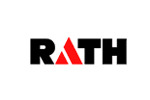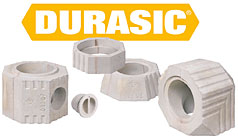Antique Swedish Tile Stoves - Kakelugnar
For pictures see Gallery
Origins and Basic Principles:
The period between 1500 and 1800 was known as ‘Europe’s little ice age’. In Sweden, where it was even colder than it is nowadays, it was clear that the constant use of fireplaces from morning till night would eventually lead to the total depletion of the nation’s forests. It was most fortunate, then, that in 1776 Adolf Frederik, the King of Sweden, commissioned Carl Johan Cronstedt to develop a stove that would make better usage of the country’s timber resources.
Cronstedt, an Earl, architect, inventor and scientist, was given the tall order of producing a design that would use much less wood while still heating Swedish homes efficiently. An interesting side effect of this commission was that not only was a model developed that accomplished the King’s request, but it turned out to have other unforeseen environmental benefits. Today, of course, this is primary concern to us all and to future generations. Unfortunately, other types of heating derailed the expansion of Cronstedt design during the industrial revolution.
As Cronstedt tackled the problem of how to burn less wood, the most apparent realisation was that a system must be developed to retain the heat, making constant wood burning unnecessary. He could see that most of the heat was being lost into the atmosphere, as a standard fireplace loses 90% right up the chimney. This was his first inspiration. He created a flue that snakes through a masonry stove, up and down pipes, into chambers and eventually up and out. By keeping the hot gas within the stove longer, the pollution that would normally be spewed into the atmosphere gets burned. Also, this intense heat slowly warms the bricks within the stove, gets retained in them and then radiates into the room for long periods of time. The basic concept of his design, known as kakelugn, is to fire up once or twice a day for short periods. A burn of two and a half hours can produce warmth in the room for up to 24 hours.
Very little smoke is seen coming out of a chimney where these stoves are being used. In the course of the year, a kakelugn regularly used will burn the wood of one medium sized tree, and that tree would have absorbed the complete amount of CO2 in the previous years that is emitted by the stove, thus the design is carbon neutral.
One main advantage of the kakelugn is that it burns very hot, typically 850-1050 C, whereas a standard iron stove burns at around 450-600 C. However, you can safely touch kakelugn ceramic stove and feel only warmth without getting burnt. Most heaters we have today use convection heating. The kakelugn gives off radiant heat and here is the difference: With the former, the air is heated and, as we all know, heat rises. If the air is rising, then it is also in motion, therefore its carrying dust, toxins and mites around the room, which aren’t a deal fro those with asthma and allergies. Worse still, particles are being fried on the surface of iron stoves and very hot radiators which can produce carcinogenic gases. Radiant heat, however, warms the surfaces that it comes into contact with. Skiers will know that its possible to sit on a mountain in the Alps in a t-shirt and be totally warmed up by the sun, even though you’re completely surrounded by snow. This is how radiant heat works; you are warmed, as is your sofa, your chairs and everything in your home, but not the air! Another advantage of these traditional designs is that they are aesthetically pleasing, making them suitable as a focal point in homes from a range of periods.




